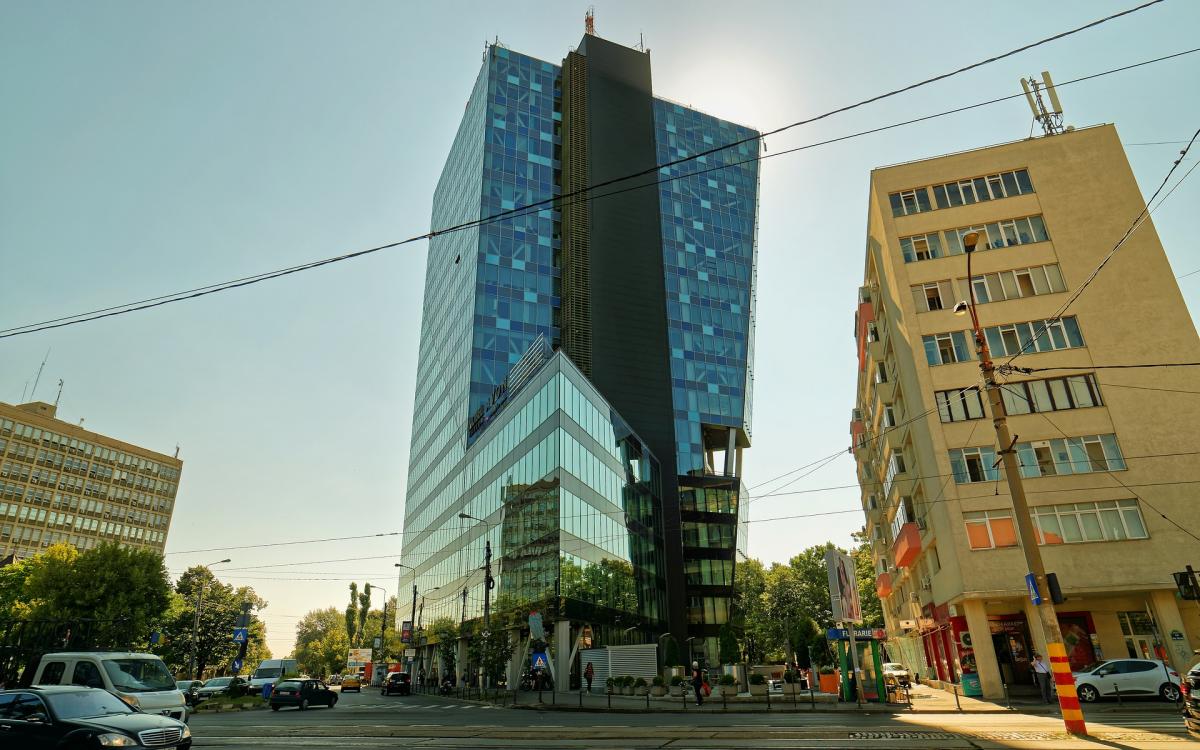Most German Metropolises Lack New-Build Offices
Most German Metropolises Lack New-Build Offices
No less than eight of the writers in our team—covering the real estate segment office, Unternehmensimmobilien, logistics, hospitality and senior living—collaborated in drafting the Spring Report of the Immobilienweisen expert panel, published by the ZIA German Property Federation. Here are the key findings for the office segment.
Sound Parameters for Office Investments
Office real estate makes up a huge chunk of the investment volume in commercial real estate in Germany. At c. 72.6 billion euros, the total volume recorded last year was the highest ever – and an increase by 19 % since year-end 2018. Office assets were the only real estate segment that achieved a significant year-on-year increase in both absolute terms and percentage-wise, growing by 26 % to 39.9 billion euros. The growth was particularly steep for offices in the Class A cities (see Chart of the Month for March). And while investments are likely to have peaked in 2019, there is reason to expect the market action to maintain its dynamic in 2020. The low level of interest, large cash reserves on the investor side, penalty interest on deposits, and the modest yield expectations for government bonds – all of these parameters make investments specifically in German office real estate as attractive as ever.
High Take-up through Steady Growth in Office Employment
Virtually all German cities have benefited from rising office employment rates in recent years, and view the trend as an opportunity for sustained structural change. Like previous years, Germany’s office rental market registered robust demand in 2019. The take-up for the country’s leading 127 office markets (only cities proper) totalled nearly 6.1 million square metres RAC in 2019, thus exceeding the 10-year mean by about 8.7 %. The one factor preventing an even better result was the product shortage on the market, especially in A- and B-Class cities.
Vacancy Rate will Stabilise
The vacancy rate in Germany’s largest 127 German office markets has continued to go up, the average across the board being 3.5 %. In the “Big Seven” cities, the rate is now well below the classic fluctuation reserve at 2.8 %. In 2020, the supply in office accommodation is likely to stabilise on the currently low level because the sustained strong building activity coincides with a slowing growth dynamic in office employment. Decisive in this context are the already high occupancy rates in pre-let projects that will come onto the markets before the end of this year.
Ten-Year High in New-Build Accommodation
But there is a flurry of building activity. The production of new-build accommodation in the 127 office markets added up to around 2.37 million sqm RAC in 2019, which is the highest figure recorded during the past decade. It even topped the high construction output of the years 2009 and 2010 by a wide margin. Judging by the verifiable completions pipeline for A- and B-class cities, it is safe to anticipate a high completions volume on German office markets in the ongoing year. It appears that the rising building prices as well as the short supply in skilled labour are not yet felt as keenly as originally assumed, the reason being that the majority of projects have already been kicked off or are in an advanced state of completion.
Upward Rental Growth for Nine Years Straight
As a result of the still strained supply-demand relation, the current market cycle has been driving up rents for the ninth consecutive year. In the Class A cities, the weighted average prime rent stood at 33.90 euros/sqm RAC by the end of 2019, which implies an increase by 9.7 % year on year. The average in the Class B cities by year-end 2019 was 15.00 euros/sqm RAC. This equals a one-year increase by around 4.3 %. Prime rents in the C- and D-class cities rose by 3.4 % to 13.40 euros/sqm RAC and by 2.1 % to 10.50 euros/sqm RAC, respectively. In 2020, rent growth in the leading German office locations will persist, even though it is likely to lose some of its momentum. The new-build construction activity, while still showing the same brisk pace, will not bring about significant relief.
Yield Rates Hardening in Cities of Every Category
Neither will the brisk building activity help to soften yield rates – Germany’s net initial yields have been in decline for the ten years now. But while hardening yield rates are reported from cities of every category, and while the Class A cities registered another modest drop to 2.8 % in 2019, the decline has visibly lost momentum lately, especially in the metropolises. Meanwhile, the situation has prompted a relocation trend: Initial yield rates are hardening slightly faster in B-, C- and D-class cities than in Class A cities.
Conclusion
Germany’s office real estate market will benefit from the sustained growth in white-collar jobs in 2020, and thus keep following the trend of previous years. The increase in office employment will in turn drive an increase in construction activities – but at a much slower pace than almost 20 years ago, when large vacancy reserves were created in German cities. The only city that will experience a drastic increase in new office accommodation in the years ahead is Berlin. But even here, the volume coming on-stream will match actual demand, so that office headline rents in all A- and B-class cities as well as in university cities are likely to keep going up.
Especially the situation on the capital market ensures that investments in German office real estate will remain attractive in what is now the eleventh year of this investment cycle, putting further pressure on net initial yields and pushing up prices at the same time. Most of Germany’s metropolises lack new-build office accommodation as well as affordable housing. The supply shortage has not only prompted a surge in market rents but in some cases also kept strong economic impulses in the cities from developing freely.
Note: The text represents a modified excerpt from the German version of the Spring Real Estate Industry Report 2020, compiled for The German Property Federation (ZIA) by the Immobilienweisen Expert Panel.
Contact person: Alexander Fieback, Project Manager Office, fieback [at] bulwiengesa.de and Oliver Rohr, Project Manager Office, rohr [at] bulwiengesa.de






